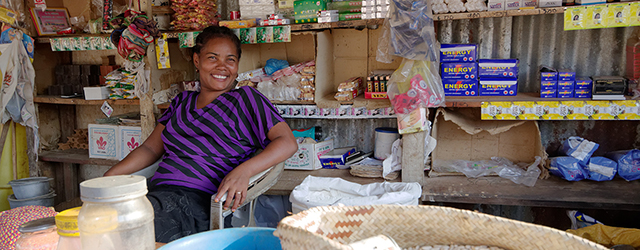Once hailed as a game-changer for the impoverished, microlenders are falling behind in the digital race while online lenders and commercial banks poach their turf. Back in 2005, UN Secretary General Kofi Annan called microfinance institutions (MFIs) “an idea whose time has come.” A year later, Muhammad Yunus, founder of Bangladesh’s Grameen Bank and arguably the father of microfinance, received the Nobel Peace Prize for championing the creation of “economic and social development from below.”
Fashioned as the ultimate solution to financial inclusion, microfinance was widely expected to explode, boosting developing economies and shaking up the rigid world of bank lending. MFIs entered the financial space by carving out a virgin niche, providing credit access to millions of unbanked people shunned by mainstream commercial institutions.
A decade and a half later, microfinance appears to be on its death bed, as innovations—particularly digital and mobile lending—renders MFIs obsolete.
Despite some attempts to embrace new technologies and even expand into deposit-taking, MFIs have been mightily disrupted by digitalization. Today, commercial banks are eating into their market while policymakers move in with regulations, spurred by concerns that some MFIs have placed their clients in debt peonage by bombarding them with loans. Meanwhile, some erstwhile clients are moving their business to banks that can address their needs for much bigger loans.
The Covid-19-induced economic crisis is aggravating the industry’s plight. Unlike commercial banks, which are required to have strong shock absorbers, many MFIs are reporting portfolio quality deterioration, liquidity constraints, rising defaults, reduced lending and forced loans restructuring.
According to a survey by the Consultative Group to Assist the Poor (CGAP), which focuses on providing timely and relevant data on the unfolding of the crisis, the microfinance sector is experiencing “tremendous strain.” Covid -19 is forcing financial institutions of all sorts and sizes to execute a quick transformation to digital platforms—a serious challenge for many MFIs, given their relatively modest asset base.
“Microfinance is an incredibly heterogeneous industry,” says Greta Bull, chief executive of CGAP and a World Bank Group director. While some will thrive, others will struggle. “I would argue that those that adapt will be in the best position to survive the digital challenge.”
"Digitalization Is Key"
Back when Yunus was accepting his Nobel Prize, by contrast, MFIs seemed to have all the right tools. Global institutions were willing to provide funds for on-lending. Microlenders weren’t bogged down by prudential guidelines and regulations. They were devoid of […]
